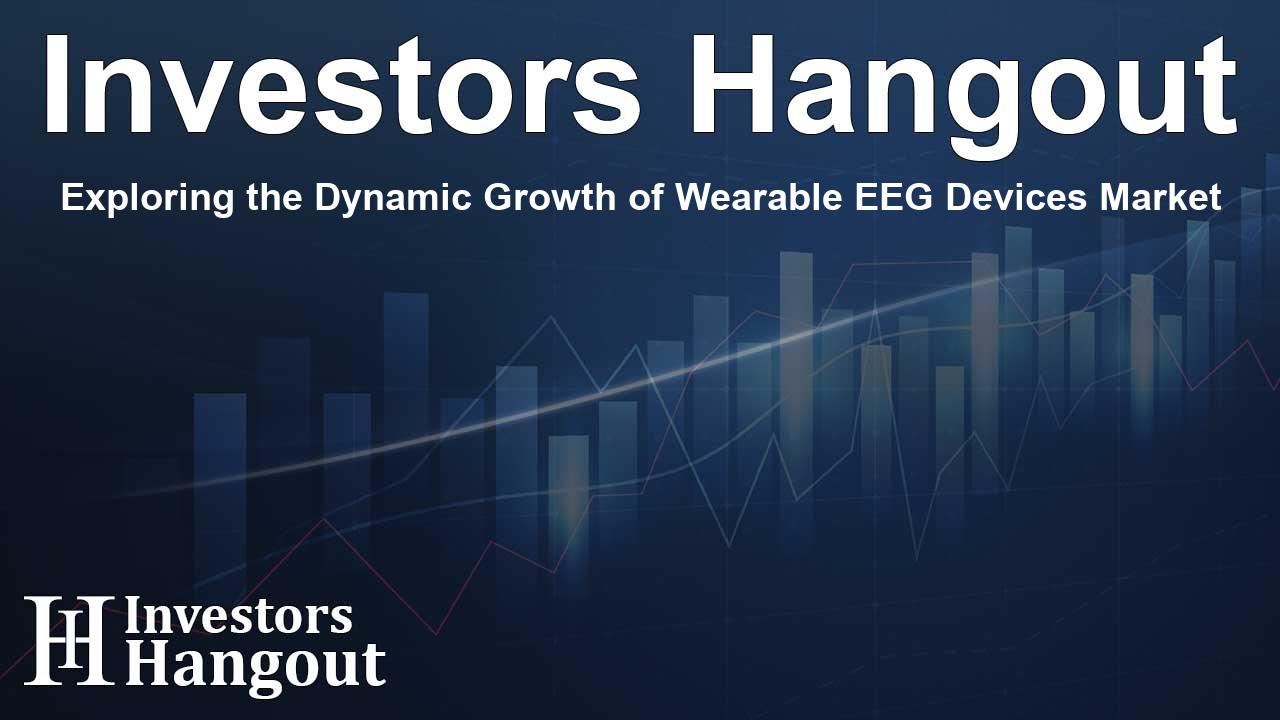Exploring the Dynamic Growth of Wearable EEG Devices Market

Growth of the Wearable EEG Devices Market
The global market for wearable EEG devices is witnessing remarkable expansion driven by the increasing prevalence of neurological disorders and the growing incidence of traumatic brain injuries. These innovative devices are projected to reach a valuation of USD 695.51 million by 2031, growing from USD 396.17 million in 2024, with a compound annual growth rate (CAGR) of 8.7% during this forecast period.
Wearable EEG devices are at the forefront of brain health technology, providing a convenient and non-invasive means of monitoring electrical activity in the brain. Unlike traditional EEG systems, which can be cumbersome and require clinical settings, these advanced devices are portable and easy to use in various environments.
Understanding Wearable EEG Technology
Wearable EEG devices incorporate small and lightweight sensors that are integrated into headgear such as caps or bands. They work by capturing brainwave patterns and transmitting this data wirelessly to mobile devices or cloud-based platforms, allowing for real-time analysis. This functionality enables both clinical and non-clinical applications, such as managing mental health and assessing neurological functions.
The value of these devices extends beyond mere diagnostics. They support continuous monitoring, empowering users with actionable insights about their brain health, which can lead to more personalized healthcare solutions.
Key Factors Driving Market Growth
One of the critical factors contributing to the surge in demand for wearable EEG devices is the increase in traumatic brain injuries (TBIs). These injuries, resulting from various causes such as sports accidents, falls, or road crashes, can significantly impair brain function. TBIs affect millions of individuals, and innovative solutions like wearable EEG devices play a pivotal role in providing timely monitoring and management.
Statistics indicate that men are more likely than women to suffer from TBIs, with the highest rates occurring in individuals aged 15 to 24. The implications of TBIs are severe, often leading to disabilities and requiring ongoing healthcare interventions. Consequently, the demand for wearable EEG solutions that support diagnosis and treatment management continues to escalate.
Expanding Applications Beyond Clinical Uses
While wearable EEG devices have predominantly been used for medical purposes, their integration into non-medical sectors is unlocking substantial growth opportunities. The use of EEG technology is proliferating in wellness, gaming, education, and workplace productivity. In the wellness industry, for instance, individuals use these devices to manage stress, enhance meditation, and optimize sleep patterns.
By tracking brainwave activities in real-time, users can monitor their mental states and apply strategies to improve focus and emotional well-being. This booming interest in mental health solutions aligns well with the increasing global demand for personalized health approaches.
Market Dynamics and Trends
The wearable EEG devices market is characterized by rapid technological advancements. The inclusion of artificial intelligence (AI) for analyzing brainwave data is a game changer. This technology enhances the precision of diagnostics and broadens the scope of applications for EEG devices.
Furthermore, a competitive landscape is emerging with significant participation from key players in the wearable EEG space. Companies like BrainBit, EMOTIV, and NeuroSky are leading the market with innovative technologies that prioritize user comfort and design, ensuring that these devices can be utilized in daily life.
Geographical Perspectives
In a geographical context, North America is currently leading the wearable EEG devices market, driven by a high prevalence of neurological conditions and significant investments in healthtech innovations. However, the Asia Pacific region is anticipated to experience the highest growth rate, fueled by increasing healthcare awareness and rising disposable incomes.
Conclusion
The outlook for the wearable EEG devices market is promising, driven by advancements in technology and the necessity for innovative solutions in both clinical and non-clinical environments. The evolution of these devices not only signifies progress in medical technology but also highlights a greater awareness of mental health and well-being.
With the landscape shifting rapidly, stakeholders across various sectors can leverage insights from current market dynamics to explore new opportunities. The continuing integration of wearable EEG devices into everyday life symbolizes a significant step forward in enhancing cognitive health and bridging the gap between technology and personal wellness.
Frequently Asked Questions
What are wearable EEG devices used for?
Wearable EEG devices are used to monitor and analyze electrical activity in the brain, aiding in the diagnosis and management of neurological disorders.
What market growth can we expect for wearable EEG devices?
The wearable EEG devices market is projected to grow to USD 695.51 million by 2031, with a CAGR of 8.7% from 2024 to 2031.
How do wearable EEG devices differ from traditional EEG systems?
Wearable EEG devices are portable, user-friendly, and designed for real-time monitoring, whereas traditional systems are often bulky and confined to clinical settings.
What sectors are driving the demand for wearable EEG devices?
Healthcare, wellness, gaming, and educational sectors are driving the increased demand for wearable EEG devices.
Are there any risks associated with using wearable EEG devices?
Generally, wearable EEG devices are safe; however, users should always follow guidelines. Consulting a healthcare provider for specific concerns is recommended.
About The Author
Contact Lucas Young privately here. Or send an email with ATTN: Lucas Young as the subject to contact@investorshangout.com.
About Investors Hangout
Investors Hangout is a leading online stock forum for financial discussion and learning, offering a wide range of free tools and resources. It draws in traders of all levels, who exchange market knowledge, investigate trading tactics, and keep an eye on industry developments in real time. Featuring financial articles, stock message boards, quotes, charts, company profiles, and live news updates. Through cooperative learning and a wealth of informational resources, it helps users from novices creating their first portfolios to experts honing their techniques. Join Investors Hangout today: https://investorshangout.com/
The content of this article is based on factual, publicly available information and does not represent legal, financial, or investment advice. Investors Hangout does not offer financial advice, and the author is not a licensed financial advisor. Consult a qualified advisor before making any financial or investment decisions based on this article. This article should not be considered advice to purchase, sell, or hold any securities or other investments. If any of the material provided here is inaccurate, please contact us for corrections.
